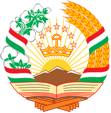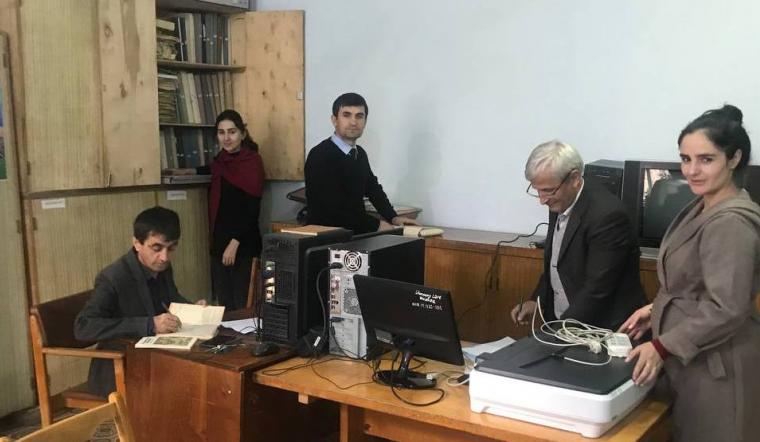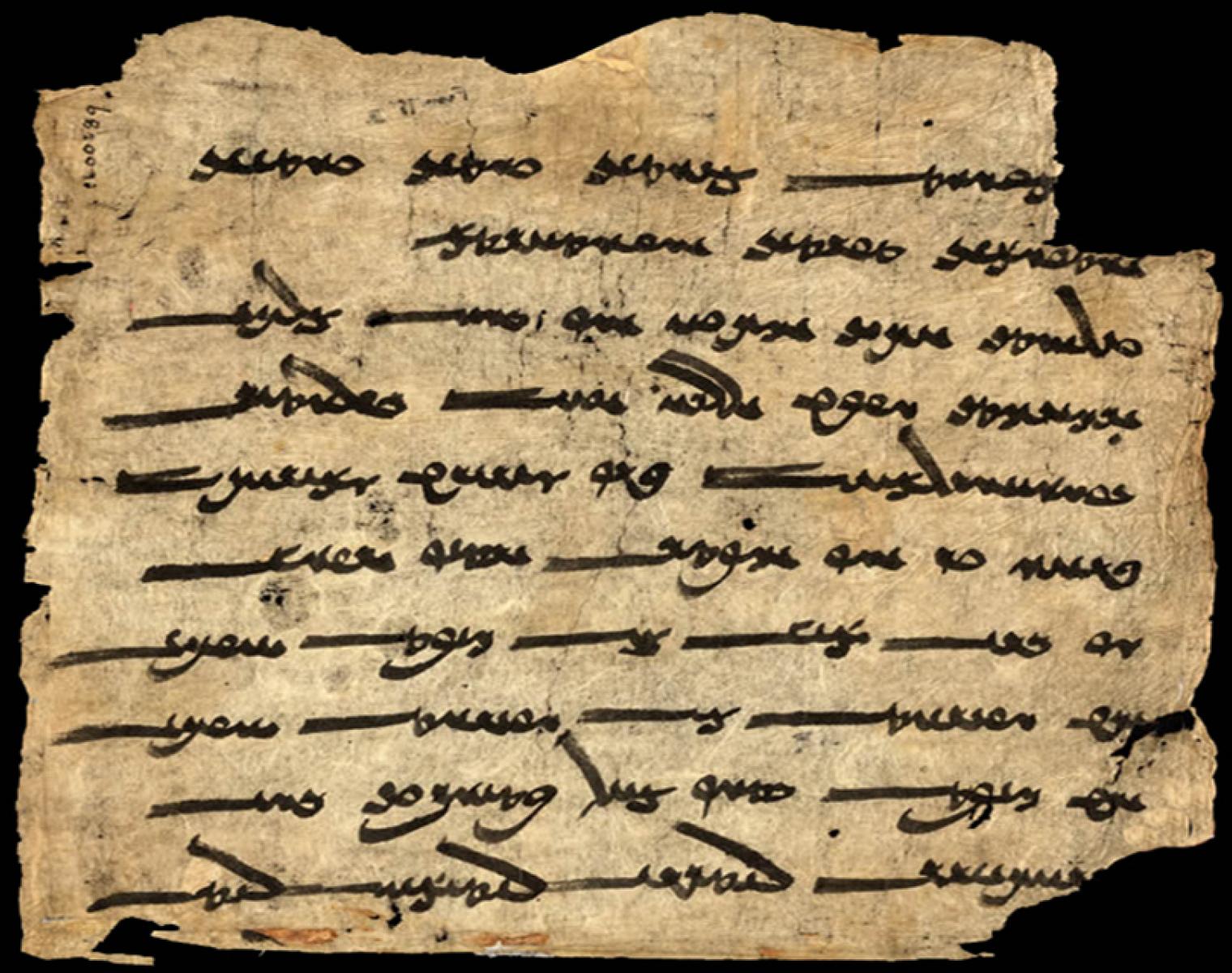Menu
08
Mar
2023
FOLKLORE DEPARTMENT HISTORY
Before the creation of the Department of Folklore of the Institute of Language and Literature named after Rudaki, Public Scientific and Research Institute (1931-1933), Tajik Base of Academy Sciences of the Soviet Union (1933-1941), the branch of the Academy in Tajikistan Sciences of the Soviet Union (1941) on the basis of which the Academy of Sciences of the Republic of Tajikistan was founded in 1951 contributed to collecting oral works of the Tajik people in the 30-40 years of the 20th century. Currently, the archive of the Tajik folklore of the Institute stores materials collected in 1923-2003 in three alphabets (Arabic, Latin and Cyrillic). In 1923-1928, some folklore materials were written by Abdullo Normat, Abdulahad Normat, Sharif Asror, Burhonov, Qurbanshah Jiyonshah, Davlatshoh Jiyonshoh, Khayriddin Qara and N. Kara were collected from Kangurt, Baljuvan, Dashtijum districts.
There were also people who, according to the demands of the time and the dictation of their hearts, drew attention to the collection of oral art of the peoples of their country. For example, Sharifkhojhai Kukhistoni collected two volumes of folklore materials from the inhabitants of the banks of the Surkhab River in the Rasht Valley, which are currently stored in Section V “Folklore Treasure named after academician Rajab Amonov”. This treasure also contains materials collected in the 1930s by the talented Tajik scientist Lutfullo Buzurzoda, among which have been preserved the rarest and most complete versions of the song “Zhashni Lola”. In the 30s of the last century, he also collected folklore material from the inhabitants of the Khatlon region regarding the "Vosev uprising". In the 30s of the twentieth century, N. A. Boldyrev also collected, corrected and researched Tajik folklore. N.A. Boldyrev published fundamental articles on Tajik folklore and defended his PhD thesis.
Collected material necessitated the creation of a folklore fund. First, the head of this treasure of folk art were S. Normatov, M. Kholov and then K. Hisomov. Since 1962, Muradov has been the head of the fund and with his care and efforts, this treasure was preserved without damage during the disturbance years. The Department took into account the need to study the oral creativity of the Tajik people in a video and audio way, and from 1958-1959 onwards hired an expert in the field of audio and video equipment E. A. Schwartz. He established an equipped laboratory for the recording and handwriting of folklore works, and photographed and filmed during the ceremony and interesting moments of the art of traditional folk storytellers and speakers in the localities, an important part of the video and audio recordings are kept in the audio recording archive of the department.
After the establishment of the department and attraction of young employees, every year two or three groups of folklorists went to the localities and collected various examples of the oral creativity of the people. Scientific working groups also made service trips to Tajik-populated cities and regions of Central Asia and collected and researched valuable artifacts from the folklore of Tajiks living abroad. In 1958, in July-August, a group of folklorists R. Amonov (head of group), R. Akhmadov, M. Kholov and T. Isroilova conducted cultural excavations. They visited the villages of Asht and Ponghoz and collected samples of folk artefacts. In 1959, a group of folklorists travelled to the city of Samarkand and its surrounding districts - Forishu Nurato for a period of three months, where B. Shermuhammadov (head of group) F. Zehniyeva, M. Hodieva and R. Ahmadov were included. Samples of oral literature were collected from the residents of the city, especially from the women and girls of Tajik carpet weavers of Samarkand and its districts, as well as from the residents of the villages of Sentob, Ukhum, Katahej, and the center of Nurato, which were published in collection of "Legends of Samarkand" (1965), "Songs of Samarkand" (1966).
The result of these field works in the report form of R. Akhmadov and M. Kholov was published in the News of the Academy of Sciences of the Republic of Tajikistan.
In 1960, the Department of Folklore, in order to better collect folk art, published the guidance for collecting folk art. This manual was a guide in the work of collecting, viewing and organizing all genres of folklore or folk culture.
The guidance was compiled by R. Amonov, R. Akhmadov, T. Isroilova, S. Normatov, S. Aminova, M. Kholov, H. Rakhmatov, B. Shermuhammadov, A. Sufiev and K. Hisomov had arranged. Address of Institute of Language and Literature named after Rudaki to workers, teachers, educational and cultural workers, press, youth organization, students and all Tajik intellectuals was published at the beginning of the "Guidance".
It was written the following there: "Time is expensive. The elders and those who remembered the oral tradition of our ancestors, including many great orators, singers, skilled folk artists, are gradually disappearing. They will take with them a lot of precious things. Therefore, it is necessary to use time as a treasure and record the oral creativity of the people as soon as possible. This work requires a lot of time and effort. No matter how many scientists, collectors and folklorists there are, it is impossible to fulfill this important task by their own strength. This honorable work requires the active participation of all the Tajik intelligentsia, teachers, employees, media and education workers, schoolchildren and students, all lovers of folklore. Everyone who loves the history and culture of their people should participate in this work. By recording and publishing oral works of a particular region, these works will become a national treasure and will be included in the treasury of world culture and art». The text of the address petition was published in the newspaper of "Teachers" and then in district and regional newspapers. This important measure quickly attracted the attention of people, as a result of which folklore lovers collected samples of oral creativity of their locality and sent them to the folklore department. Employees of the folklore fund wrote these articles in the fund's personal notebooks and entered them into the department's reserve.
After the publication of the address and the hire of scientific staff from different regions, two or three folklore expeditions were sent every year to different regions of Tajikistan and Tajik-inhabited places of Uzbekistan. In order to make clear the contribution of each scientific employee to this good work, we consider necessary to mention them here. They travelled for collection of materials that delas with oral creativity dfferent part of Tajikistan and Tajik-inhabitant places of Uzbekistan. In particular, in 1960, B. Shermuhammadov (head of group), R. Ahmadov, S. Ahrorova, T. Isroilova and E.A. Schwartz travelled to Bukhara region; in 1960, R. Amonov (head of group), B. Shermuhammadov, T. Israelova, Kh. Otahonova and E.A. Schwartz travelled to Vakhsh Valley; in 1959, B. Shermuhammadov (head of group), D. Obidov, H. Rakhmatov, S. Merganov, T. Isroilova travelled to the villages valley of Varzob district; in 1960, H. Rakhmatov (head of group) T. Israelova and F. Zehnieva travelled to Varzob and Hisor districts; in autumn of 1960, R. Ahmadov (head of group), H. Rakhmatov travelled to Kashkadarya region; 1958-1961, R. Qodyrov travelled to Kashkadarya region; in 1962 F. Muradov (head of group), S. Aminova and M. Mirkamolova travelled to Khovaling and Dangara; in 1979, D. Obidov (head of group) Yatimov travelled to Gharm and Tajikabad; in 1982, K. Hisomov (head of group), F. Muradov, Sh. Umarova, M. Azamova and D. Mahkamova travelled to Jirgatol and Tajikabad, in 1983, R. Akhmadov (haed of group), M. Latifov and Sh. Umarova travelled to Romit and its surroundings; in 1984, R. Akhmadov (head of group), R. Qodyrov and S. Fathulloev travelled to Qashqadarya region; in 1977, B. Shermuhammadov (heads of group), R. Ahmadov travelled to Forish district of Jizzakh region of the Republic of Uzbekistan; in 1979, D. Obidov (head of group), J. Rabiev travelled to Panjakent; in 1986, Sh. Umarova travelled to Baljuvan; in 1991, T. Isroilova and Kh. Vazirova went on business trips to Darvaz and Vanj.
Each genre of folklore is indicated in the fund sheets with symbols FFI, FFII, FFIII. The continuation of the folklore works of the fund started from FBI and reached FBII.
After completion of these works, the list of folklore genres was adjusted. The scientific staff of the department comprised of following: R. Amonov, B. Tilavov, B. Shermuhammadov, I. Azimov, F. Zehniyeva, R. Ahmadov, S. Normatov, S. Mahdiyev, D. Obidov, J. Rabiev, F. Murodov, H. Rahmatov, N. Ulughzoda, Q. Hisomov, S. Fathulloev, N. Shakarmamadov, E. A. Schwartz, M.M. Yavic, T. Isroilova, R. Shirinova, Z. Uvaidova, M. Habibova, M. Mirzoeva, N. Mardonov (postgraduate of the department).
Researchers of proverbs and sayings comprising of B. Tilavov (head of group), Q. Hisomov, F. Murodov were employees of this group. The first five-volume collection of proverbs and sayings was published by this group, and with the cooperation of E. A. Schwartz compiled a one-volume puzzles of the Tajik people as a part of "Tajik Folklore Collected Works" (40 volumes), the first volume of which is "Proverbs" (CWTF, IV). - Dushanbe, "Donish", 1986 and volume II (CWTF, V) - Dushanbe: "Donish", 1992, were published in Tajik language with Russian and English translation. Reviews written by folklorists from other countries to the volumes of the Tajik collection show the global importance of this field of proverbs study in Tajikistan. According to the new methods, analysis, research and in-depth research of the historical and comparative method, textual, social, geographical, philological research with the use of computers became an important factor in the success of Tajik proverbs studies.
In the preface to this collection, I. Levin gives interesting details about the essence of the fairy tales genre theory, the history of the collection of tales about animals on a global scale, generative theories, geography and history, sociology, philosophy of fables, its art, the repertoire of collections and the bibliography of this genre in world science. The first volume of the collection of Tajik folklore was also written by the world's scientists who engaged with tale study.
A group of songwriters led by I. Levin and R. Amonov was responsible for the development and printing of the volumes of the collection. This group included B. Shermuhammadov (head of group), R. Akhmadov, F. Zehniyeva and S. Fathulloev. After editing and preparing for publication three volumes of the Collection of people's quatrain, this group prepared two volumes of ceremonial songs, one volume of seasonal and work songs, two volumes of Kulliyat of wedding songs and one volume of children's songs for publication. N. Azimov and N. Ulughzoda were also included in this group.
The group of scientists engaged with study of songs directly headed by R. Amonov and B. Shermokhamadov was the leader. R. Amonov supervised the work of all the teams that participated in compiling the volumes of the Complete Collection of Tajik Folklore, and was engaged in the study of the topic of Tajik folk lyrics. In 1968, the valuable book of R. Amonov "Tajik Folk Lyrics" was published and the author of this work defended his doctoral dissertation. In this work, for the first time in Tajik folklore, the problem of folk lyrics was studied in detail. This thesis is devoted to the issues of creativity, structure, artistic representation of a number of genres of Tajik folklore, songs, poems, quatrain, couplets.
The group of scientists engaged with study of songs, comprising of B. Shermuhammazhov (head of group), R. Akhmadov, F. Zehniyeva and S. Fathulloev and later Sh. Umarova were included in the second period of regulation of Collected works (in 15 volumes) (1981-1996). Also, the volumes of "Songs of the wedding celebration", "Seasonal Songs and Labor" and "Children's Songs" of Tajik Folklore Collection were prepared by this group and these volumes were to be published in the "Knowledge" publishing house.
A group of prose experts, headed by M.L. Yavich comprising of D. Obidov, J. Rabiev and S. Mahdiyev started editing the volumes of the Folk Prose Collection. Apart from the regulation of Kulliyot, the scientists of this group continued their research work. Under the leadership and guidance of I. H. Levin, two scientists defended their candidate thesises. One of them is M. M. Yavich who defended his candidate theses on topic of "Tajik legends about animals" and another one is J. Rabiev who defended his candidate thesis on the topic of "Classification of the essence of narrative means in Tajik folk prose".
Also from this group, D. Obidov wrote and defended his thesis on the topic of " Tajik humorous fairy tales" which was published in 1978. Thus, Tajik folklorists researched many important folklore issues and wrote scientific works on folk lyrics, the relationship between written literature and the oral creativity of folk proverbs and sayings, on various genres of folklore.
Children's folklore, seasonal ceremonies, wedding celebrations, historical songs, folklore of Tajiks of Afghanistan, Iran and the position of "Gurughli" stories in the spiritual life of the Tajik people were researched and discussed, and were published scientific theses as well as.
At the end of the 20th century and the beginning of the 21st century, the publication of the folklore of Rasht, Uroteppa, Qashqadaryo region, Dangara, Bukhoro, Iron, Afghoniston, Badakhshon, as well as the improvement of the folklore department, the study of the connection between the issues of poetics and the artistic style of the people's creativity in the folklore department of the Institute of Language and Literature named after Rudaki of the Academy of Sciences Tajikistan and the education of young Tajik, Afghan and Iranian folklorists is the proof of the development of folklore in Tajikistan. In the near future, "Complete works of epos" (in 20 volumes) will be compiled.
ACHIEVEMENTS OF THE DEPARTMENT UP TO
INDEPENDENCE PERIOD
Tajik folklore Complete Works "Fables and tales about animals". (volume 1, 1981); "Anecdotes", (in two books, volume 1, 2007); "Proverbs and sayings" (volume 3, 1986); Complete Works of "Quatrains" (1970); Complete Works of "Songs" (1980); "Soviet". Vol. 1, 2. 1979.
ACHIEVEMENTS OF THE DEPARTMENT FOR INDEPENDENCE PERIOD
"Folklore of Uroteppa" (1991); "Proverbs and sayings". (Volume 4, 1992) compiled by J. Rabiev: "Folklore of Danghara" compiled by F. Muradov. (2002); "Folklore of Rogun" compiled by R. Ahmadov and S. Fathulloev. (2017); "Folklore of Afghan Tajiks" Compiled by R. Ahmadov and S. Fathulloev (2020) and others.
In different years, the head of the department were the following scientists: Doctor of Philological Sciences, professor, academician Rajab Amonov (1958-1994), Doctor of Philological Sciences Bozor Tilavov (1994-1996), Doctor of Philological Sciences, Professor Bahrom Shermuhammadov (2006-2016). From 2017 up to present the head of department is Candiddate of Philological Sciences Abdulamin Majnunov.










